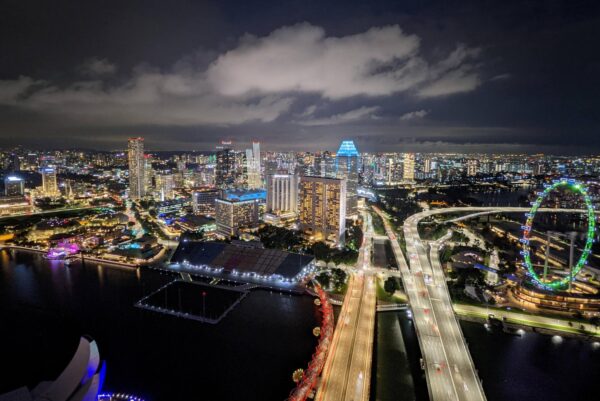
Singapore plans to require all new cars from 2030 to be of cleaner-energy type. With just five years to go from now, people who are looking to buy a new car now face a pivotal decision. Should they get a petrol vehicle now, a cleaner-energy hybrid car, or look for a pure-electric option?
First, let’s clarify what cleaner-energy means in the context of our Land Transport Authority’s (LTA) green target for 2030. New car registrations from 2030 must be of cleaner-energy models, which include electric, hybrid or hydrogen fuel cell cars. Pure-petrol cars cannot be registered from 2030. (New pure-diesel cars will not be allowed from 2025. Furthermore, by 2040, LTA expects all cars to be of cleaner-energy models. That means to say that you will not find pure-ICE cars on the road by then.
Petrol stations are not going to go extinct, since there aren’t any plans to require cars to be fully-electric. However, it is clear that demand for petrol will fall, not least because pure-electric vehicles won’t need petrol to begin with, but also hybrid vehicles are going to be far more fuel-efficient than traditional Internal Combustion Engine (ICE) cars.
Are you tempted to skip hybrid cars altogether and look at EVs instead for your next car? Is Singapore ready for mass EV adoption? Where are we now in terms of how prevalent EV cars are in Singapore? I have been pondering over these questions.
I was recently in Shanghai, and I was awestruck by how the city has embraced EV adoption. 60% of new car registrations are EV. Singapore is still lagging behind in a couple of ways, but there is clearly an uptrend toward EV adoption. For example, for the first three months of 2025, 40.2% of new car registrations in Singapore are EVs. BYD, in particular, is a runaway success, making up 1 out of ever 2 EV cars registered this year, and 1 out of every 5 of all car types registered this year.
There’s a healthy pace of increase in the number of EV cars. Less than 0.5% of cars were of pure-electric type at the end of 2021. This increased to 1%, 1.8%, and just shy of 4% at the end of 2022, 2023, and 2024 respectively. As of end March 2025, 4.6% of cars on the road are pure-electric type.
Those figures for EV cars are very small compared with hybrid cars. There are also still more new hybrid cars registered than there are pure-electric EV cars. Nevertheless, the gap is closing, and I expect we may see the latter taking the lead by the end of this year. There will still be more hybrids than EV cars on the road for many more years to come because of the natural replacement cycle of cars. However, we can expect the number of hybrids to start declining in the next half decade or so.
My point here is simply that EV cars are not that exotic or niche anymore in Singapore. I know some people want to avoid the hassle of having a car that is different which makes it hard to get service and support. Don’t worry. There is a healthy trend in the growth of EV adoption. Maintenance and battery warranties are becoming quite generous, with some dealerships offering 10 years of free maintenance and 10 years of battery warranties.
The significant challenge for EV car owners, especially those who don’t stay in a landed property, is accessibility to EV chargers. While there is a total of 15,300 charging points as of November 2024, only 7,100 of them are publicly accessible. LTA is targeting to have 60K charging points by 2030. While this four-fold increase sounds good, I’m not certain this increase is proportionate to the expected number of EV cars on the road by then.
I can only hope that the Singapore government makes a more committed push towards a EV car ownership. The phasing out of petrol-only (as well as diesel-only) vehicles is great. However, I feel there should be more incentives to move toward pure-electric. Apart from supporting more installations of public EV charging infrastructure, I think our LTA should really consider removing the Additional Flat Component ($700) that EV cars need to fork out in their road tax.
The logic behind the Additional Flat Component was intended to ensure that EV owners contributed their fair share toward road usage cost, since they don’t pay petrol duties. In a way, it also aligns with the government policy to encourage people to switch to public transportation instead of driving cars. However, the landscape has changed. Hybrids, as well as plug-in hybrids, use far less petrol and thus pay less in petrol duties, but they are not slapped with other additional surcharges. Pure-electric EV cars are contributing the least toward pollution on our roads, so it is counterintuitive to maintain this additional cost for such cars.
I first begun considering getting greener-energy vehicles almost two decades ago. I twice explored hybrid vehicles, but unfortunately both times around, there weren’t enough tax incentives to make hybrids economical for me. Hybrids cost more, and pure-electric vehicles even more. I feel right now that EV cars are just beginning to make economic sense, and removing the Additional Flat Component from the road tax for EV cars will tip the balance in their favour.
This is still early times, but I feel that we are on the cusp of a new era. Pure-petrol vehicles are on the way out. Hybrid vehicles aren’t all that transformative. Pure-electric EV cars are the future of cleaner, greener driving.
